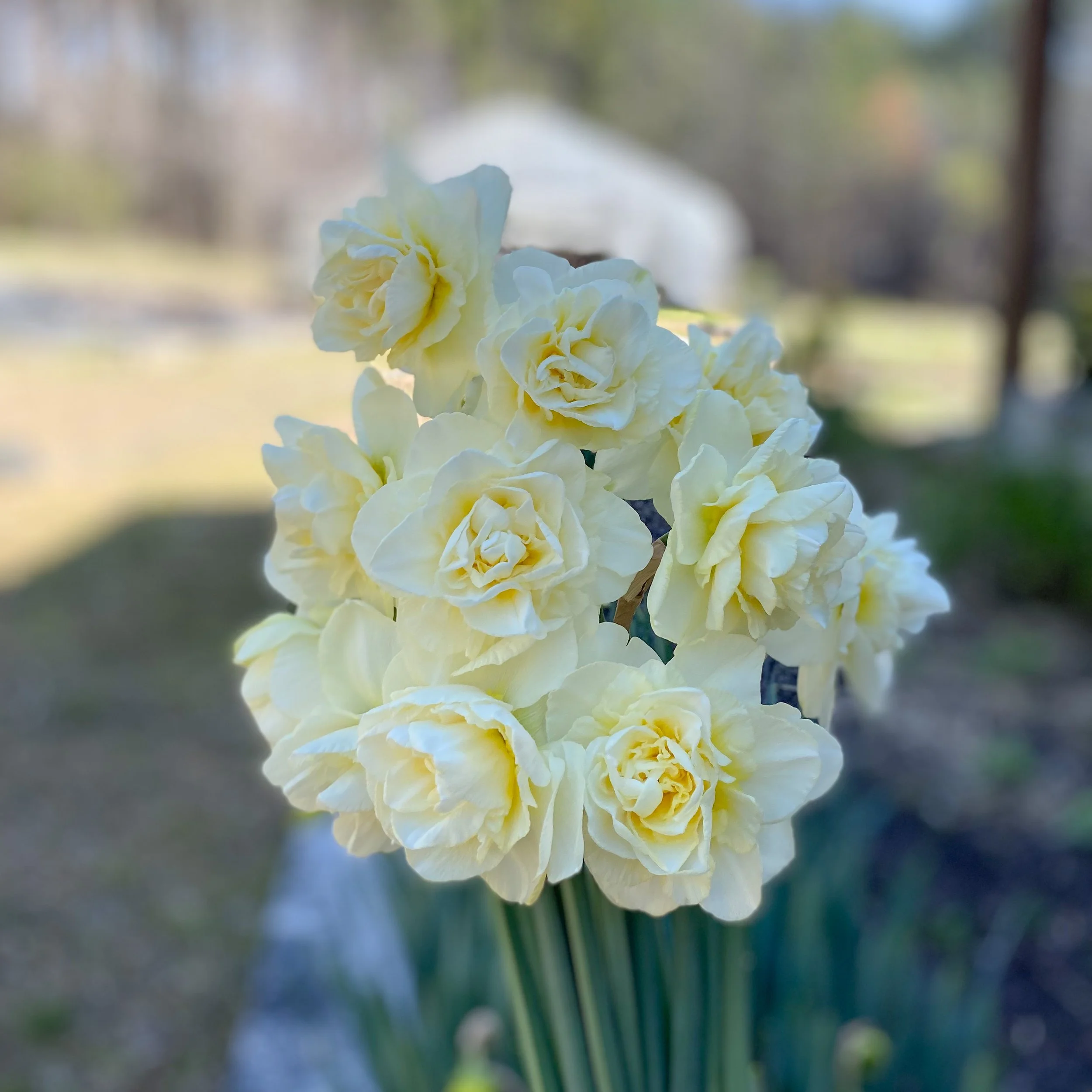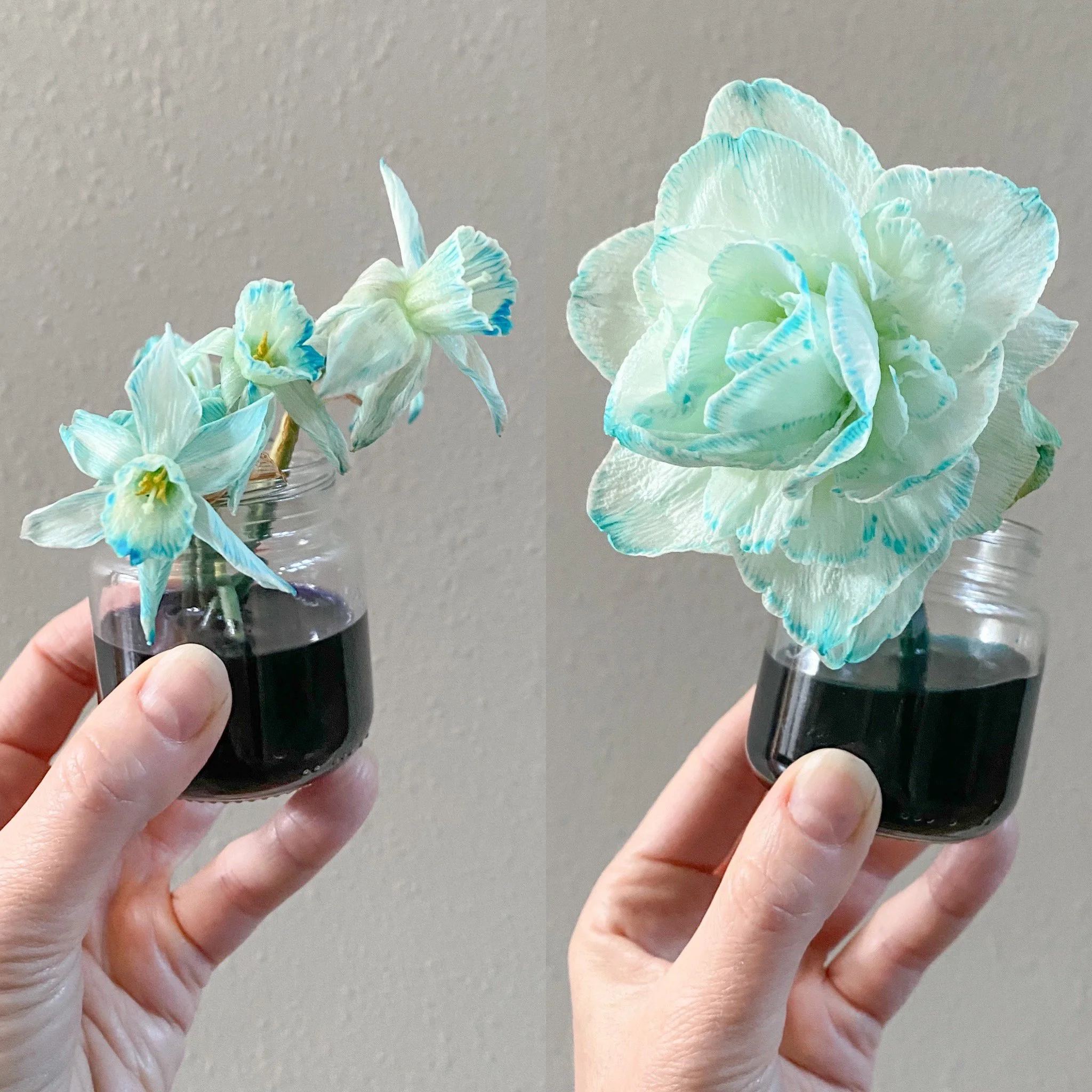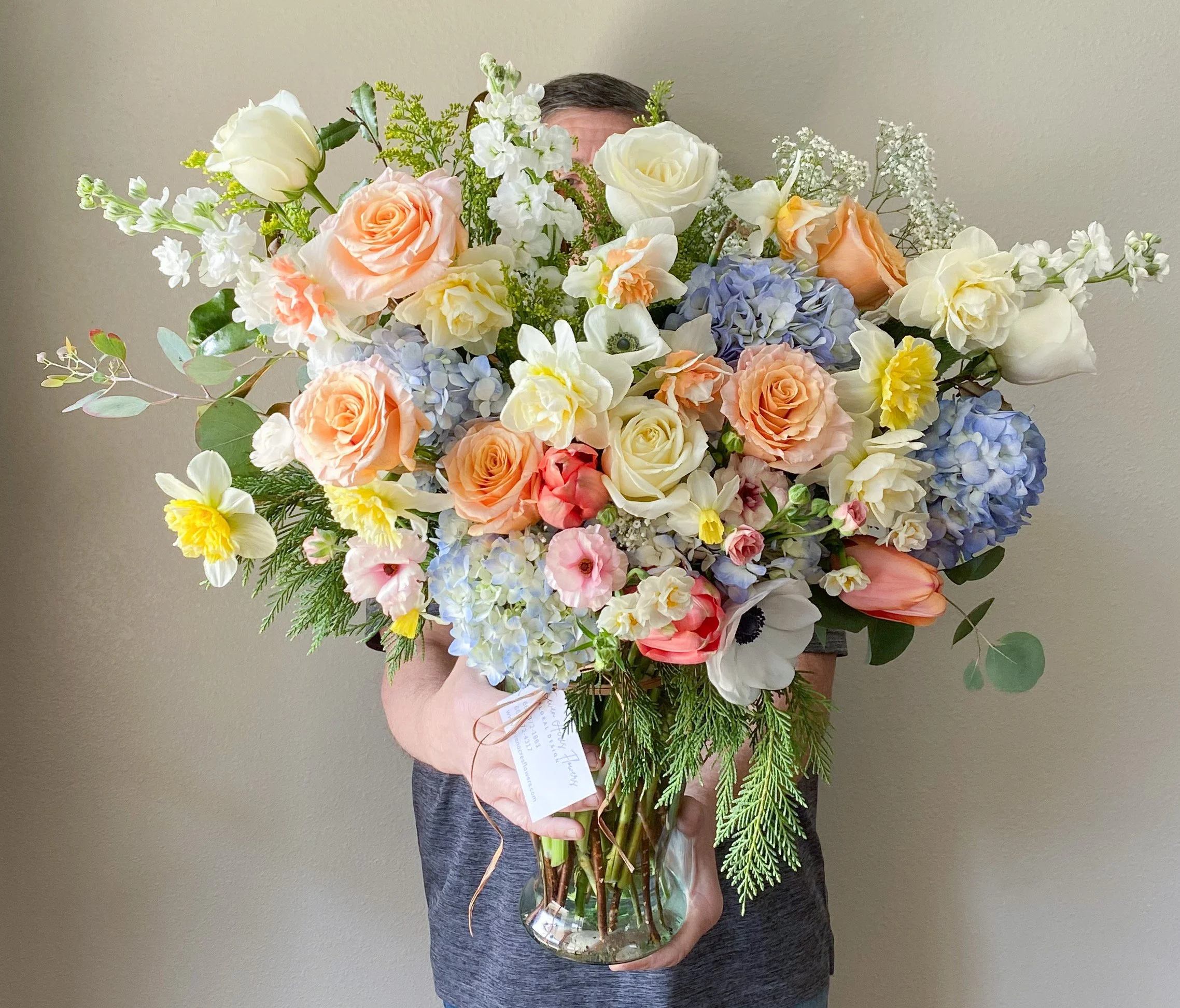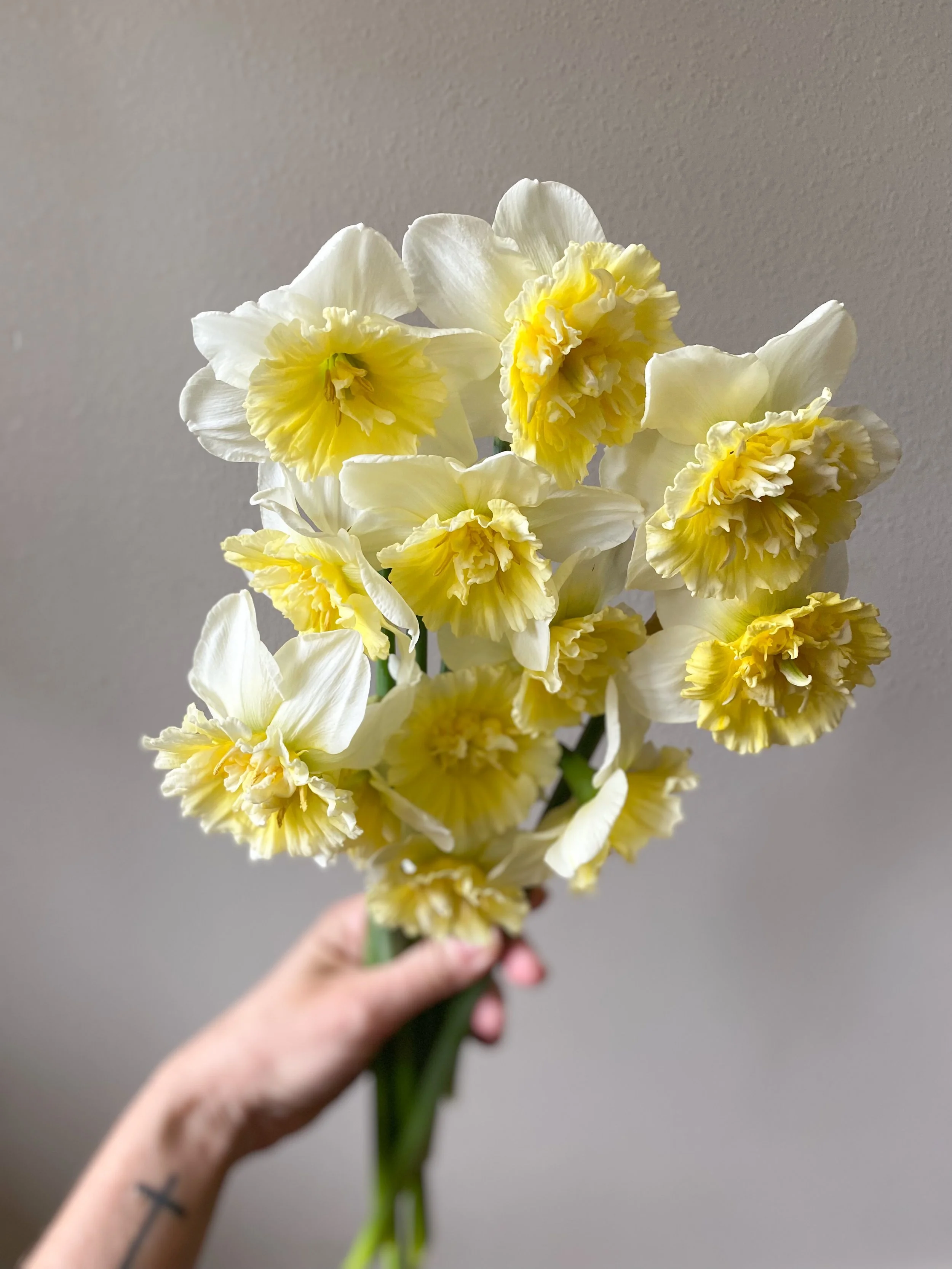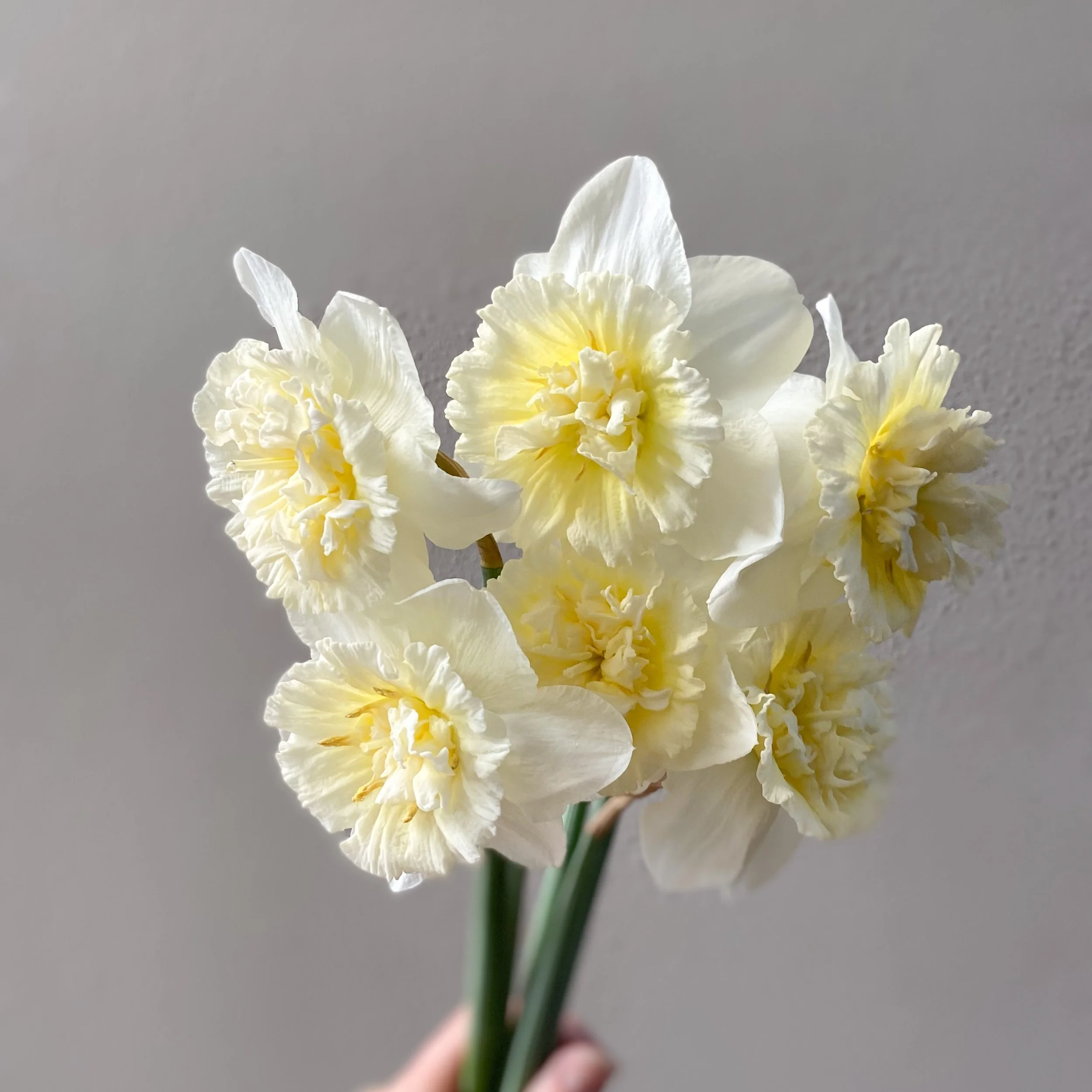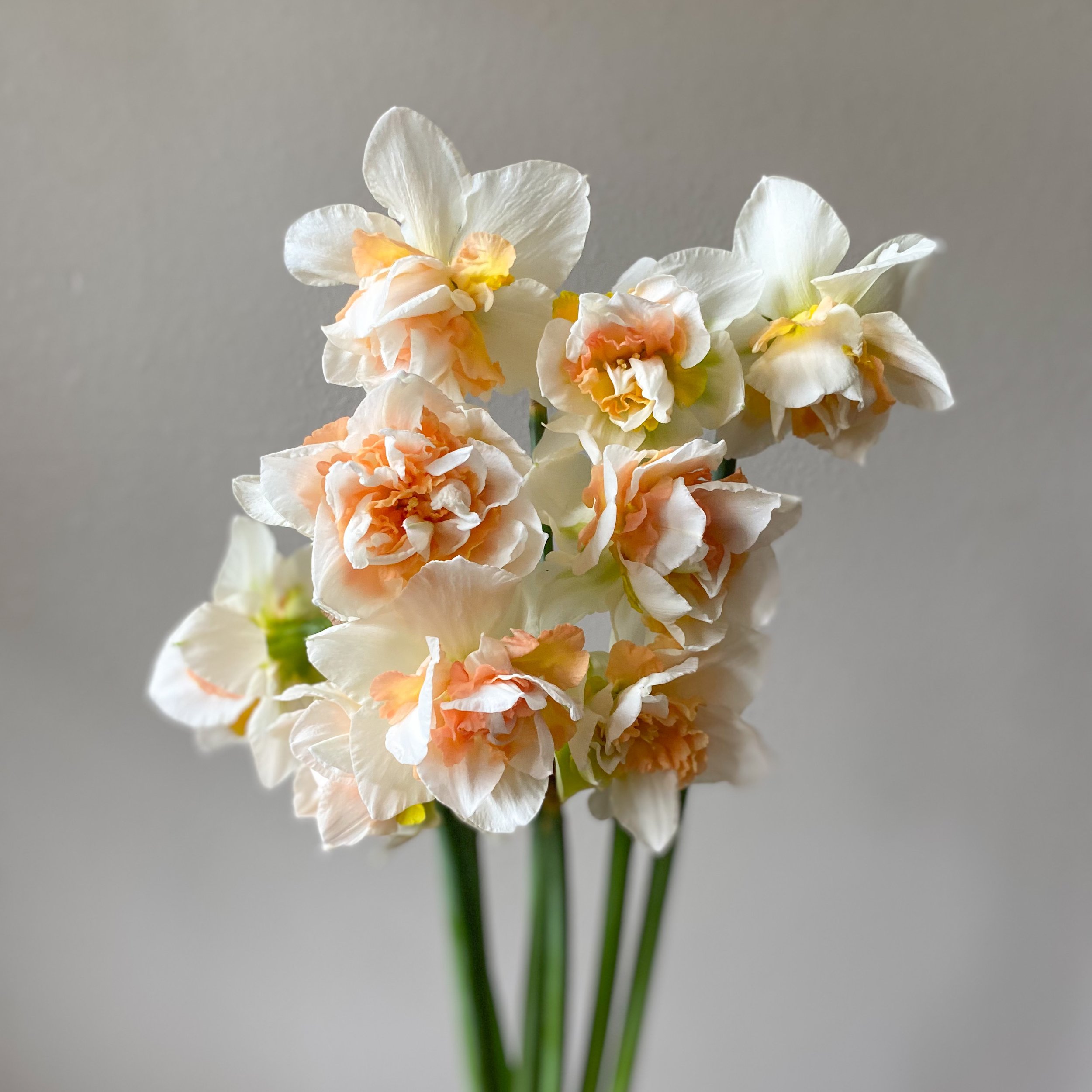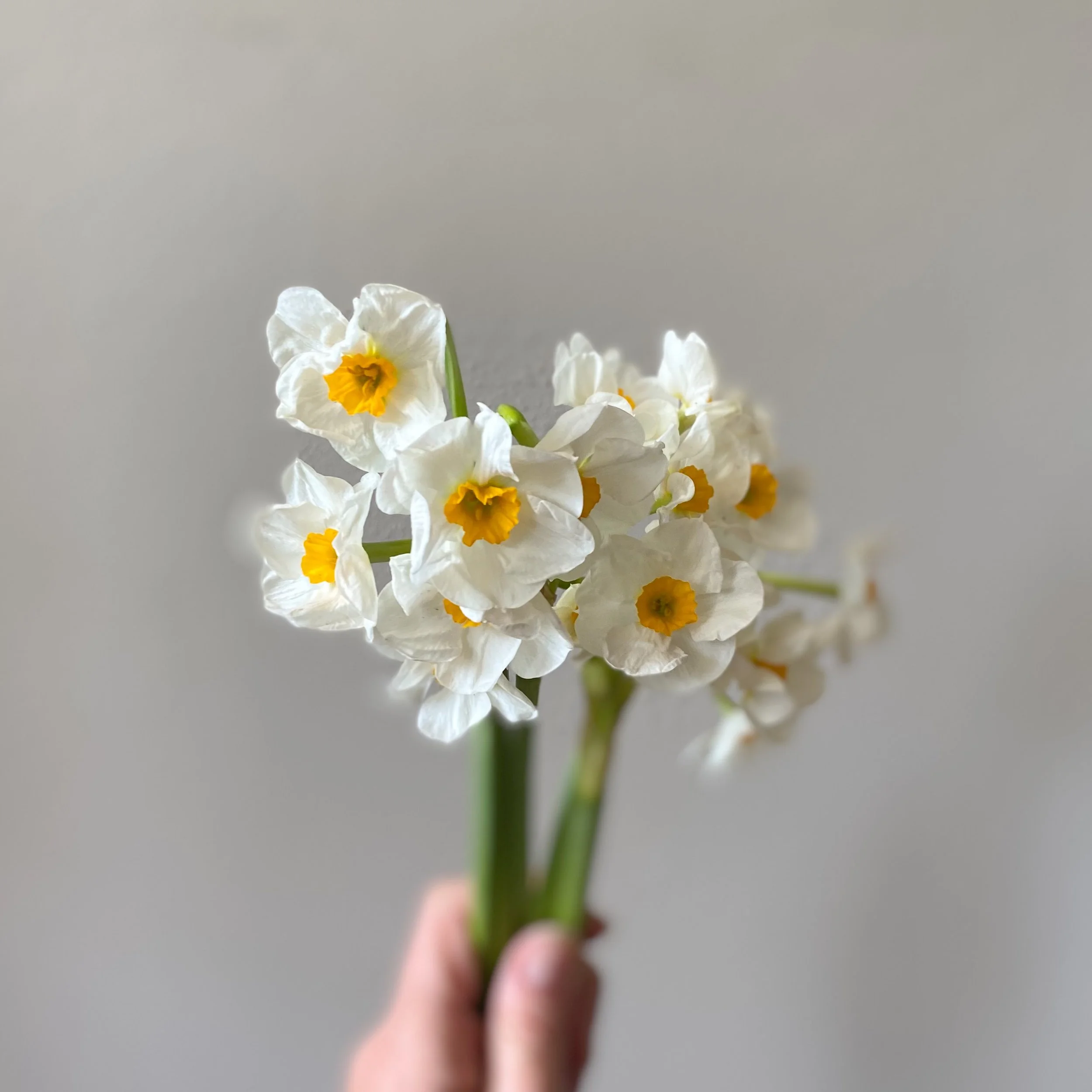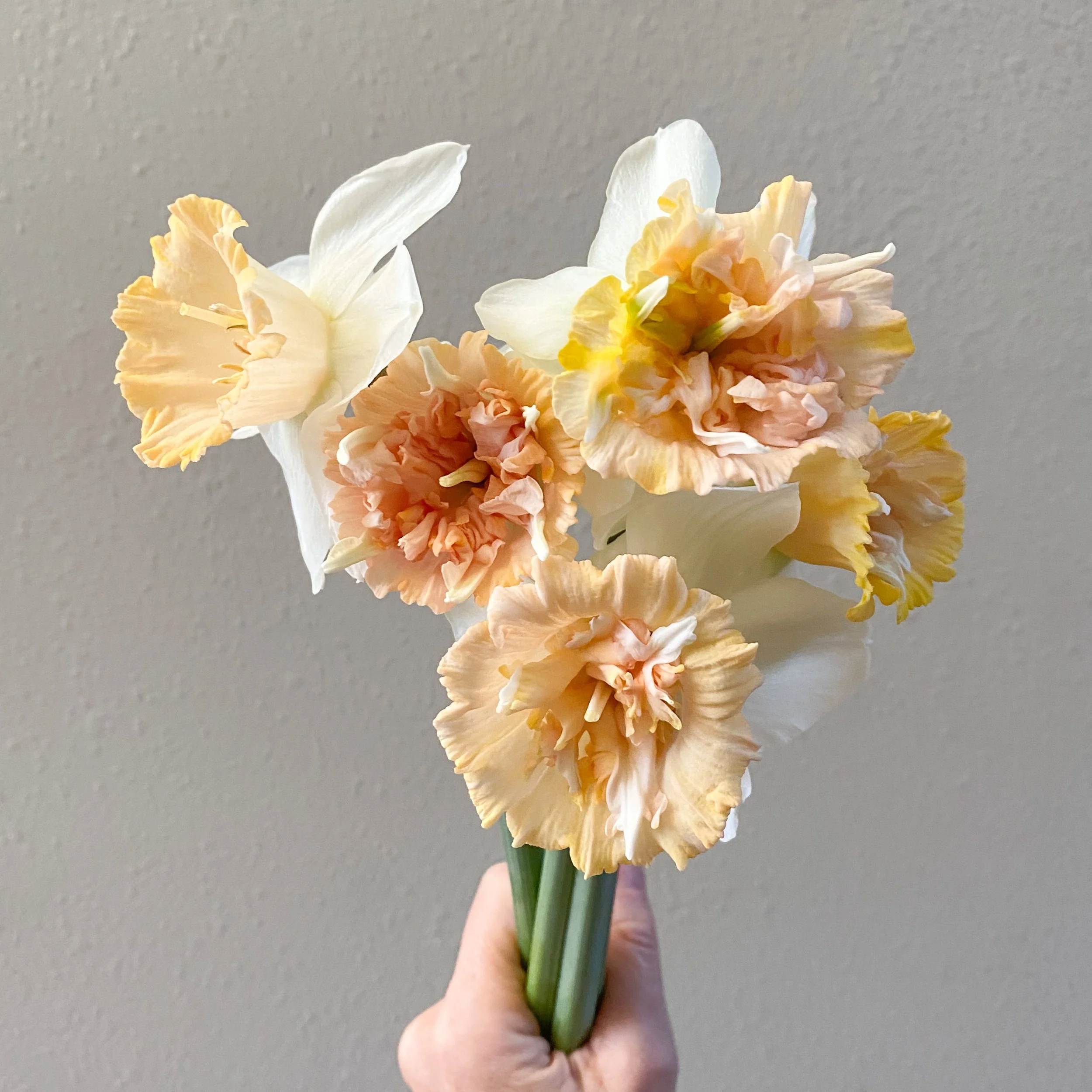Diving Deep Into Daffodils
‘Obdam’ daffodil
Some of the first blooms of spring, daffodils are such a welcome sight!
From the typical bright yellow blooms that pop up along roadsides and prairie land, to the specialty double daffodils that bloom in shades of apricot, pink, and ivory, let’s dive into some specifics about this sweet welcome friend of spring.
As a child, I remember huge clumps of daffodils that popped up every spring in my grandparent’s back yard, and along their circular driveway. They didn’t have to water them or take special care of them. They just left them to grow and return every spring.
I also remember my mom showing me how you can put daffodils in water with food coloring and see how they change colors as they take up water. I tried this little experiment recently with my grandson on some of our specialty daffodils. It worked the same way as it did all those years ago!
Daffodils in water with food coloring
There are so many beautiful varieties of daffodils; miniatures, fragrant, ruffled, double bloomed, multicolored. They’re hardy and easy to grow. They come back every year and multiply. They are rarely plagued by pests, and they’re deer and rabbit resistant! What’s not to love?
We’re growing several specialty varieties that are proving to be beautiful in spring bouquets.
Mixed bouquet with several specialty varieties of daffodils, roses, hydrangeas, snapdragons, tulips, butterfly ranunculus, anemones.
‘Ice King’ Daffodil
‘Ice King’ daffodil
The first of our specialty daffodils to bloom for us this year was ‘Ice King’. ‘Ice King’ has beautiful ruffled and crimped central petals that start bright yellow and fade to the softest shade of buttercream as it matures.
‘Ice King’ as it matures into a buttercream color
These beautiful daffodils are packed with tiny ivory petals peeking out from the center of the bloom, and large outer petals that reflex backwards.
This is a gorgeous variety that has mixed beautifully with other spring blooms for our springtime bouquets and bundles.
‘Sailboat’ Daffodil
‘Sailboat’ daffodil
Next to bloom for us this year was the miniature daffodil ‘Sailboat’. This adorable flower starts with a bright yellow center and ivory reflexed outer petals. As it ages, the center fades to a soft pale buttercream.
This daffodil is on the shorter side, growing just 7” - 12”, but makes a dainty and elegant cut flower for small bouquets. Whether cut for a bouquet or left to grace a flower bed border, this daffodil is long lasting, and ages gracefully.
‘Obdam’ Daffodil
‘Obdam’ daffodil
‘Obdam’ has large, textural, double blooms that look similar to crepe paper. Large outer petals are ivory in color, with smaller buttercream petals tucked in between the layers, giving these blooms a fluffy appearance.
These are absolutely gorgeous mixed into a spring arrangement, but the stems do bend easily because of the large, heavy heads. They are best used when cut before the bud opens to minimize bending of the stem.
‘Replete’ Daffodil
‘Replete’ Daffodil
‘Replete’ is one of the first daffodils to bloom for us and is also one of the taller varieties at 16” - 18”. The super fluffy, ruffled flowers on this beauty bloom in shades of ivory and salmon, and blend beautifully with other spring flowers.
Despite their heavy heads, these blooms don’t bend as easily as some of the other varieties of double daffodils and hold up well in mixed bouquets.
‘Cheerfulness’ Daffodil
‘Cheerfulness’
‘Cheerfulness’ is an heirloom variety that blooms with creamy white petals and a yellow center. It produces 2 - 3 florets per stem and has a sweet, musky fragrance.
This petite daffodil has a height of 14” - 16” and is the perfect addition to the front of a bouquet.
‘Bridal Crown’ Daffodil
‘Bridal Crown’ Daffodil
‘Bridal Crown’ is a very fragrant miniature daffodil. Each stem produces multiple frilly double blooms in creamy white and tangerine.
It grows to the height of 12” - 14” and looks lovely lining the front of bouquets.
‘Petit Four’ Daffodil
‘Petit Four’ Daffodil
White petals perfectly frame the double apricot crown, which is filled with a mix of apricot, buttercream and peach frilled petals.
This double daffodil grows to a height of 18” - 20”.
Harvesting Tips
When cut, daffodils emit a sap that can cause skin irritation. Use caution and wear gloves when cutting.
For the longest vase life, harvest before blooms open, when they look like a gooseneck. Flowers can also be cut after they have opened, but won’t last quite as long.
Condition stems before adding to other flowers in an arrangement. Daffodils emit a sap that can shorten the vase life of other flowers. To avoid this affecting other flowers in an arrangement, daffodils should be conditioned after harvesting. To do this, place freshly cut stems in a separate container of water and allow to sit for 3 - 4 hours to release sap. Do not recut stems after conditioning.
